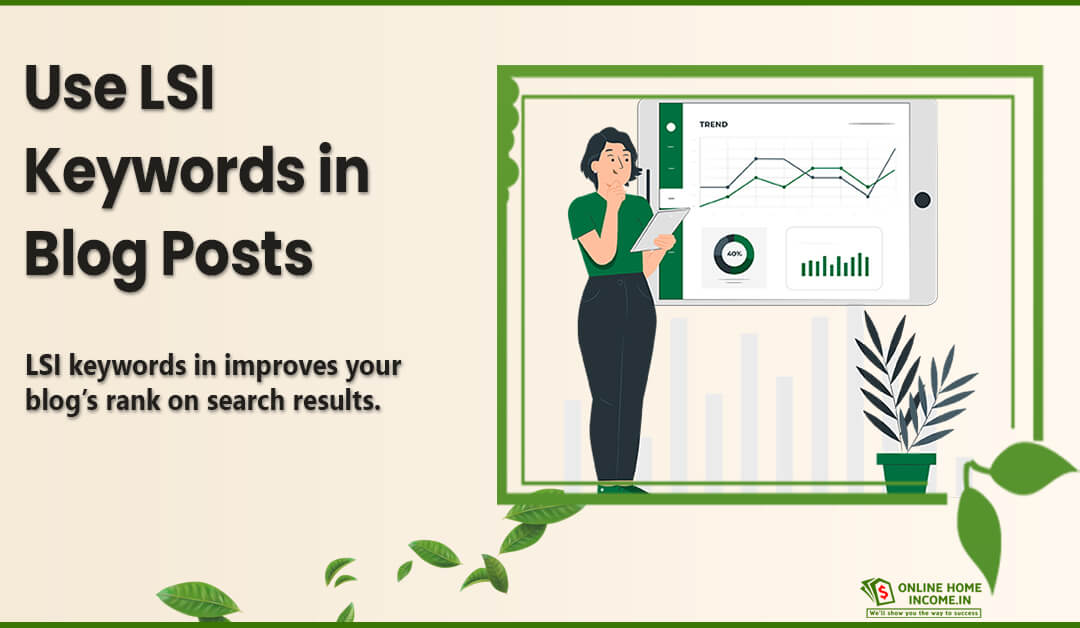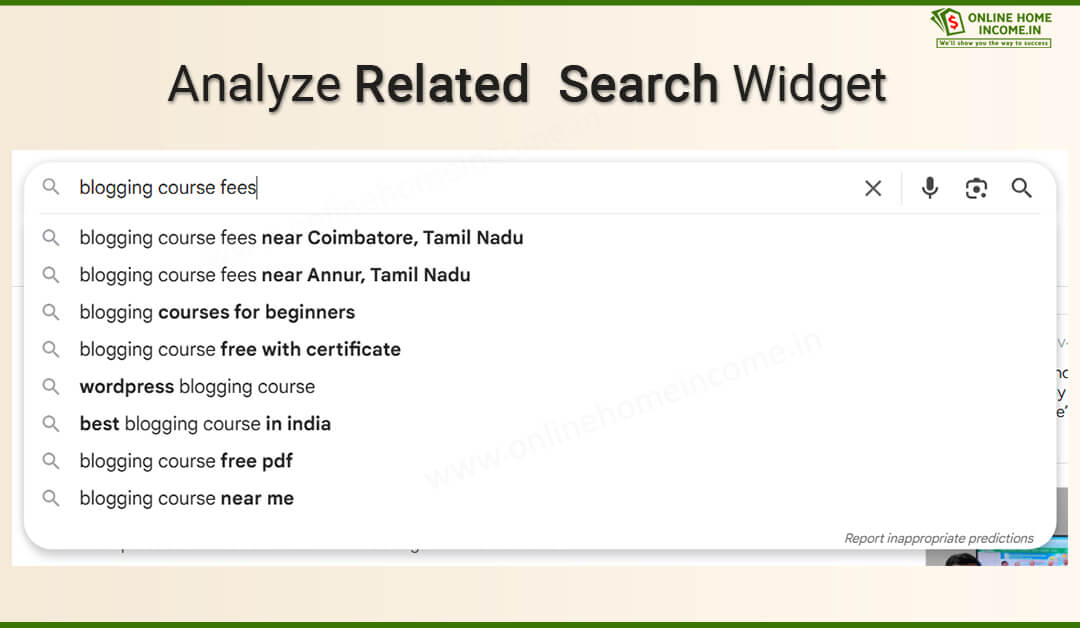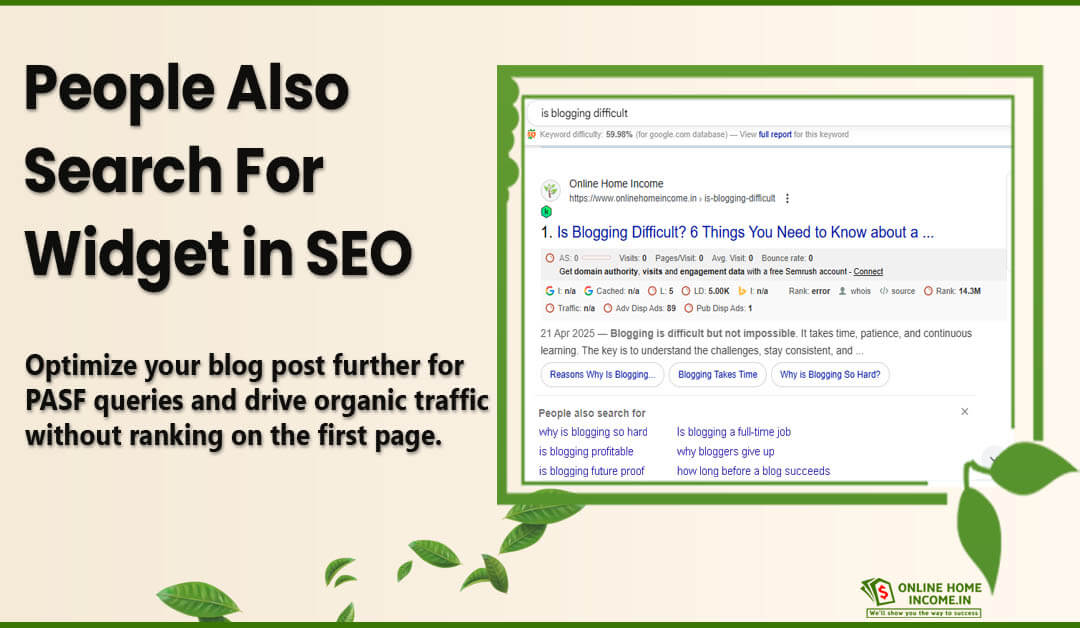Out of the many categories of keywords, let us learn about the significance of LSI keywords in improving your blog’s rank on search results.
If you were my regular follower, you would have come across my articles on keywords and their importance for a blog post.
Anyway, I will give a quick brief on keywords and how they impact your blog’s position on Search Engine Result Pages (SERPs).
Getting your blog on the top spots of search results gives you the highest organic visibility.
It allows you to reach those who query for your content. This process is referred to as Search Engine Optimization (SEO).

Furthermore, using the right keywords that match the user’s query and search intent maximizes your chances of higher ranking.
There are many categories of keywords, like primary, secondary, long-tail, and LSI keywords.
In this article, we will learn about the less prioritized but game-changing group of keywords that improve your opportunities for query-relevant listings.
This group of keywords, called LSI keywords, comprises word combinations semantically similar to your focus keywords.
So, how do I find my LSI keywords?
Where must I add them to my blog post?
I will answer these queries in this blog post and discuss some examples for better understanding.
What are LSI Keywords?
LSI keywords are semantically relevant to your focus keywords. Understand that LSI keywords are not synonyms but refer to similar words that are relevant to the domain.
Semantic relevance refers to how one or more words relate in a particular domain.
For instance, a user searches for “kitchen chopping board.”
A website does not have the exact keyword but instead targets “vegetable chopping board.”
Since vegetables are cut in the kitchen, Google learns this relevance from millions of other documents. Therefore, this website can rank after the websites targeting the exact keywords.
Such keywords are helpful, especially when your domain is relatively new and your niche terminology is still developing.
Blogging course fees can be targeted by pages with blogging webinars.
Football matches near me can be targeted by a page with the latest sports tournaments in.
From these LSI keyword examples, you can infer how they work:
- Enhance your ranking chances in the absence of the right focus keyword.
- Show an in-depth understanding of the user’s search intent.
- Improve your blog relevance and expertise.
- Increase organic traffic coming to your blog.
- Reduce the stuffing of focus keywords.
Just like your focus keywords, LSI keywords boost your SEO by improving the relevance metric of your blog.
What is Latent Semantic Indexing
LSI stands for Latent Semantic Indexing. Also known as latent semantic analysis, it is believed that Google uses this algorithm to link relevant documents with semantic relevance.
When Google crawls the web, it indexes relevant web documents based on the LSI intensity.
So, web pages and blogs from a particular domain are indexed using similar words to the index.
However, there is a debate on whether LSI is relevant in SEO. Google search algorithms have evolved beyond LSI and are more AI-powered machine learning algorithms.
These algorithms are trained to find highly relevant documents even if the target keywords do not match or appear on the resulting pages.
Let us learn why you must include LSI keywords in blogs to improve SEO.
Why Use LSI Keywords in Your Blog Post?
Now, let me help you understand the meaning or purpose of LSI Keywords in every blog post you write.
Assume you are blogging on AI and its impact on online customer support – a comprehensive guide.
Naive users, unaware of your domain terminology, will use popular terms to query this topic.
Let us say a user types Chatbot support for my online business.
An intelligent AI-powered chatbot is one of the popular ways to support customers online.
So, if you could include terms like chatbot support in your blog article, you would get listed.
Now, you can infer the important factors that you cannot ignore LSI keywords, in your blog posts.
Enhancing Content Relevance and Quality.
LSI keywords are best for describing supporting topics or as examples for your blog topic. They show your skill and expertise in your blogging domain.
Improving User Experience and Engagement.
Highlighting the various sub-domains or related topics in your main blog post helps users understand your post better. With better understanding comes increased engagement.
Boosting Search Engine Visibility and Rankings.
Including relevant or related topics as keywords gets you a chance of ranking on SERPs. Ignoring LSI keywords doesn’t even get your blog on SERPs.
So, I recommend adding at least 3 to 4 LSI keywords to each of your pages for better visibility.
How to Find LSI Keywords for Your Blog Content
Like any other keyword, LSI keywords in SEO come from detailed keyword research.
Mostly, such keywords are based on related topics and suggestions prompted when a user enters a focus keyword.
Relevant searches are coined by Google search algorithms to facilitate users in searching for other related topics.
Let us learn in-depth how to find a good set of LSI keywords to enhance your blog SEO.
1. Utilizing Keyword Research Tools
Most of the popular tools that you use for keyword research help you get a list of LSI keywords.
Almost every tool has a feature to type a particular keyword and discover a set of related keywords.
You can analyze and get a good mix of LSI keywords from this keyword set.
Here are some popular tools that I recommend for finding LSI keywords.
SEOPresser
This tool is a popular WordPress plugin to enhance various aspects of your blog SEO. Among various other features, its Progressive LSI Keywords Engine suggests popular LSI keywords for a given focus keyword.
A cross mark is indicated near the LSI keyword suggestions that you have ignored in your blog posts. Adding them at appropriate locations in your blog post shows how your SEO score improves instantly.
SEMRUSH
I have mentioned this tool in most of my posts relating to keyword research. The Keyword Magic Tool has the biggest database of keywords for analysis and usage. The “Broad Match” option shows a list of semantic keywords and their traffic volume.
Google Keyword Planner
The “Discover New Keywords” feature lets you find a list of relevant keywords for a given focus keyword. Depending on the monthly searches and traffic volume, you can choose LSI keywords that work best.
2. Analyzing Google Related Searches and Suggestions

When you enter a search query, you will find a set of queries as you scroll to the end of the first result page. These queries come under a section called Related Searches.
From the set of queries under Related Searches, you can find various subtopics and semantically relevant topics.
In fact, such queries show how Google relates blog posts under the same topic in terms of keyword priority.
Let us take the example mentioned above on the Blogging course fees.
The set of related searches gives me:
- Blogging courses for beginners
- Blogging course free with certificate
- Blogging for beginners course free
So, you can understand that a lot of beginners seek blogging courses to try blogging for free or for a small fee with certification. This relation is based on Google’s indexing.
Similarly, Google auto-complete suggestions also give you a rich list of relevant keywords.
Typing the same keywords in the search bar will prompt several options in the drop-down box as you type each keyword.
For the same query, I get these results in suggestions:
- Best blogging course
- WordPress blogging course
- Blogging course fees near me
3. Use Google Search Console(GSC)
This tool is important to measure the performance and incoming traffic to your blog website. An overall analysis helps to improve your blog SEO.
While GSC is more useful for evaluating your blog’s technical SEO. You can also use this to land on potential LSI keywords for your blog.
For instance, type the domain name of a top blogging page in your blogging niche in the Search Traffic and Search Analytics page of GSC.
You will get a list of keywords that are driving potential traffic to that blog. Then, read their blog post to see how they have treated the traffic-attracting keywords.
Similarly, enter your blog’s domain and figure out how your keywords are attracting traffic. Find what is missing from your post that the top results in SERPs are attracting for a given keyword.
This process helps you derive the most suitable LSI keywords for each blog post.
4. Leverage Answer the Public
Answer the Public is a free tool used by SEO experts to understand what people ask on search engines and browse on social media.
This tool works like Google auto-suggest when you type the seed keyword. However, instead of just showing the suggestions, this tool also provides a comprehensive analysis of related searches.
For instance, the tool lists the various keyword combinations and variations of related search queries that users type to reach a query.
Thus, Answer the Public allows you to compare suggestions to explore and arrive at a set of LSI keywords.
This tool provides real-time and updated insights into keyword combinations that users are searching for.
You may also receive timely updates on new suggestions and quickly optimize your blog posts to never miss out on any organic queries.
Then, you can further research the list of related keywords you derive and look for keywords that attract low traffic for higher organic reach.
5. Leverage LSI Graph
This tool is used by most bloggers to generate a set of relevant keywords. LSI Graph has a WordPress plugin for easy use.
The biggest challenge in choosing keywords is to find the right balance of search volume and keyword difficulty.
LSI Graph provides an Opportunity Score (OS) for every potential keyword that solves this dilemma.
Choosing a keyword with a higher OS improves your SEO.
Similarly, every related set of keywords has the mention of the search intent beside them.
- Information – I
- Transactional – T
- Navigational – N
- Local – L
You can also get in-depth insights into top blogs in your domain for a keyword with SERP Analyzer.
This feature is helpful to show their treatment of keywords along with metrics like keyword density, keyword intent, readability, etc.
Finally, the most useful feature is the Topic Clustering feature that instantly groups related topics under a given keyword and their aggregated SEO.
Incorporating LSI Keywords into Your Blog Post
Now we know what LSI keywords are and how you must find them. Then, let us see how exactly Google understands that a webpage is semantically linked to your user query.
Gone are the days when search engines used keyword matching to look for relevant results. This measure was a result of a lot of spammers and hackers stuffing trending keywords to gain visibility.
Then, the semantic relevance measure became a norm. Every keyword in a user query is analyzed for correlation and relevance to locate the niche that Google must return results on.
Here, the search engine crawlers look for synonymous words, relevant words, and words semantically related to the focus keywords.
The more your blog has the right mix of the above words, the more relevant your blog becomes to a search query.
Furthermore, Google computes a similarity factor using these words to those in the search query.
Finding a good mix of semantically related words improves the similarity score, authority, and domain relevance of your blog, thereby providing you with an increased SEO score.
Also, answering frequently asked questions related to your topic improves your chances of appearing at the top search results.
How to Use LSI Keywords for Blog SEO?
Next comes adding LSI keywords to your blog page. The very idea of keyword research is to find relevant words to your blog topic and add them naturally to your blog post.
Moreover, an average reader must not be able to guess what your focus keyword, secondary, and LSI keywords are.
I have already covered a post on how to add keywords at various strategic locations in your blog post.
Let me give a quick list of bulletins on the best places to add your LSI keywords.
- The meta title of your blog post must contain your focus keywords. The next best place to add LSI keywords is the meta description.
- The introduction or the first paragraph of your blog posts must contain the relevant topics that you will cover in your blog post.
- The ALT attribute of your Images in HTML must contain LSI keywords for semantically related media files.
- Have sufficient header tags in your blog posts to discuss relevant topics. LSI keywords are suitable for sub-topic headers with detailed discussions.
Best Practices for Using LSI Keywords Effectively
You can derive LSI keywords from topics related to your blog post topic. These keywords are the best alternatives to prevent keyword stuffing.
Moreover, LSI keywords help maintain a natural flow of information when blogging about your problem statement.
For instance, consider the focus keyword, no boil no oil cooking.
Some LSI keywords for this topic could be fireless cooking, poha rice, grated vegetables, non-fried vadai, etc.
Imagine you published a blog post with recipes to make rice by soaking poha alone, fireless cooking of the famous snack – vadai, etc.
So, when a user searches for “no boil no oil cooking”, your blog post has a chance to rank.
Conclusion
Keywords are undoubtedly the high-priority entities that help your blog rank high for a search query.
Finding the most relevant keywords that can get you closer to your organic traffic is the best way to boost your SEO.
LSI keywords are an often-ignored group of keywords that can significantly improve your organic visibility.
One may use any combination of words to reach your blog post. But is your blog powered with such semantically relevant words?
Failing to target keywords of semantic relevance to your focus keywords can make your blog vanish from SERPs, even if you have the right content.
Conversely, having keywords that users frequently use to target your blog topic can improve your rank on SERPs, even if it does not exactly match the query keywords.
So, do not forget to spend a little extra time to get your LSI keywords.
Do go through some of my previous blogs on Keyword Research and more from the Blogging category in this blog.
FAQ on LSI Keywords
LSI keywords (Latent Semantic Indexing keywords) are terms semantically related to your focus keyword. These keywords help search engines understand the context and relevance of your blog content.
You can find LSI keywords using keyword research tools like SEMrush, SEOPressor, and Google Keyword Planner. I mostly prefer Google-related searches and autocomplete suggestions.
Adding LSI keywords improves your blog’s relevance and helps avoid keyword stuffing. It also enhances user experience and increases your chances of ranking for related queries.
Place LSI keywords naturally in subheadings, meta description, first paragraph, image alt text, and throughout the body where they fit the context.
Yes, Google’s algorithms have evolved, and using semantically relevant keywords remains crucial for content depth, user intent matching, and higher search visibility.








